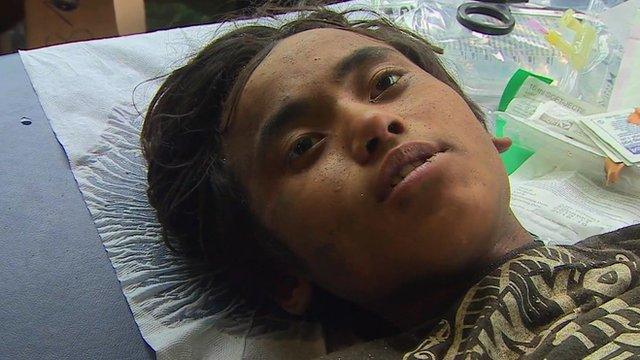Crush syndrome: Saving lives in Nepal
- Published
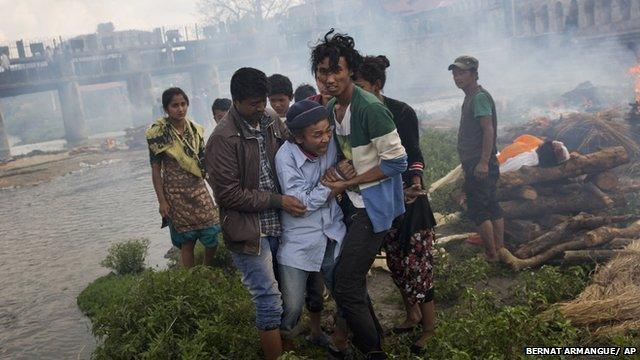
A week after the earthquake hit, scores of rescue workers are still flying in to Nepal.
They face a monumental task. The death toll is uncertain - it teeters around the 6,000 mark.
For emergency staff though it is the living, trapped in remote areas, whom they are desperate to reach.
Many have broken bones. Some face the threat of crush syndrome - where the kidneys start to fail.
But the Nepalese health system was stretched even before the quake. The charity Save the Children says it is now at breaking point.
Inflatable hospitals
Most people live in remote areas that can be difficult to access even when natural disasters do not stand in the way.
Some of the most critical needs now are obvious - surgeons are arriving to fix broken bones, injured spines and head trauma.
And Save the Children, external medical teams are hearing reports that thousands need operations.
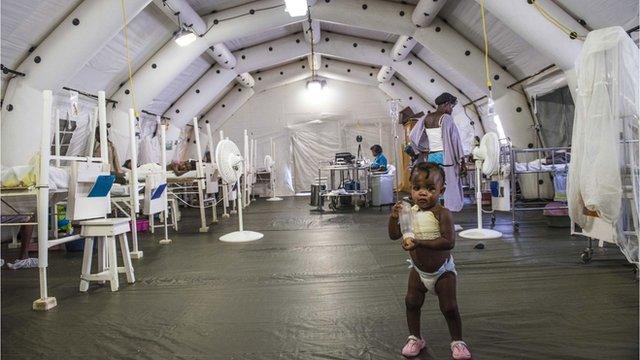
MSF used this type of inflatable hospital in Haiti
Another charity in the area, Medecins Sans Frontieres (MSF) has deployed an inflatable hospital so treatment can be given in otherwise inaccessible places.
But some are concerned that people who have been trapped under rubble remain at risk of crush syndrome.
This is when the body releases toxins in response to massive and sustained injuries- and these can overwhelm the kidneys as they try to flush them out.
Dialysis - artificial kidney machines - can help.
But according to MSF, Kathmandu's main hospital only has eight.
Such life-saving equipment only counts if people can be transferred to safety.
At the moment though, there is an urgency for more basic needs - shelter, safe water, sanitation and food.
At least 2.8 million people have been displaced - either because their houses have been destroyed or because they are too afraid of aftershocks to remain at home.
Outbreak watch
And without safe ways to dispose of waste, drinking water is in danger of being contaminated by fatal bugs.
In some places, public toilets are overflowing.
The World Health Organization (WHO) is on alert for any outbreaks of diarrhoeal diseases including infections such as cholera.
According to their experts, there have been some sporadic cases of diarrhoeal illness reported in makeshift camps.
Though things aren't near outbreak proportions, the coming rainy season could make things worse.
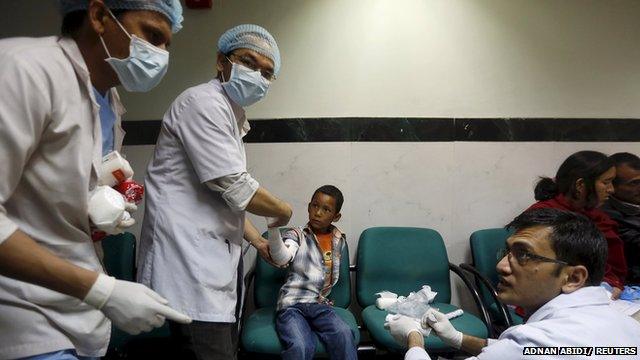
Hospitals in Kathmandu are treating some of the injured - but most are in more remote areas
Dr Prince Mathew, from MSF, said: "With the monsoon season approaching, we're worried that the window of opportunity to reach people in these areas is rapidly closing."
Katrin Kisswani, medical co-ordinator for MSF arrived in Kathmandu two days after the quake hit.
She told the BBC: "The most difficult thing is to reach the people most at need.
"We have managed to start mobile clinics using helicopters to get to remote villages in the mountains. But many roads are still blocked by landslides."
Some survivors have managed to reach the capital.
Ms Kisswani added: "They are very, very shocked and traumatised.
"Many have lost their livelihoods, their relatives and sometimes almost entire villages are gone."
Psychological help is also required urgently, she said.
While many people will see images of the destruction and naturally want to help, the World Health Organization cautions they should think carefully and ensure they are not a burden on local efforts.
Dr Ian Norton said: "There are small teams that have been launched after watching the news and that are trying to respond with the best of intentions, but unfortunately they do not have the sustainability to be able to deploy into the remote areas where we need them the most."
- Published1 May 2015
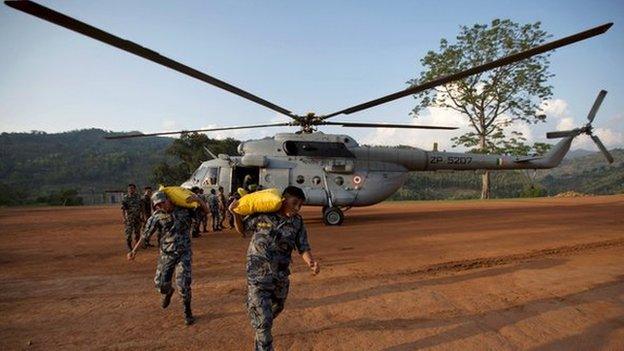
- Published1 May 2015
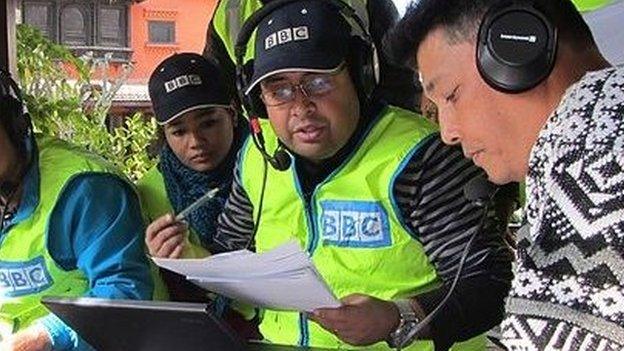
- Published30 April 2015
